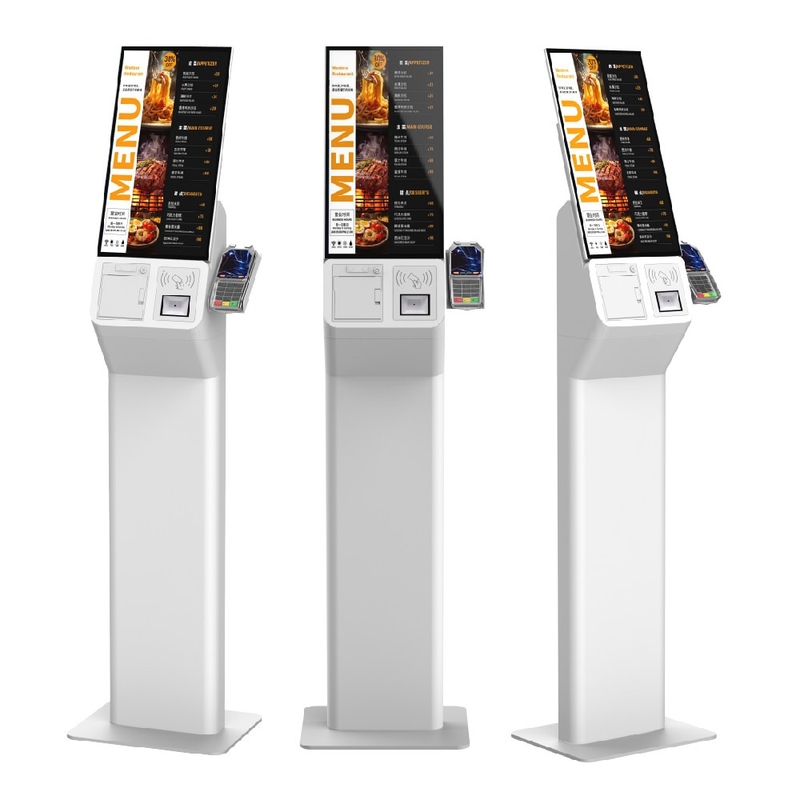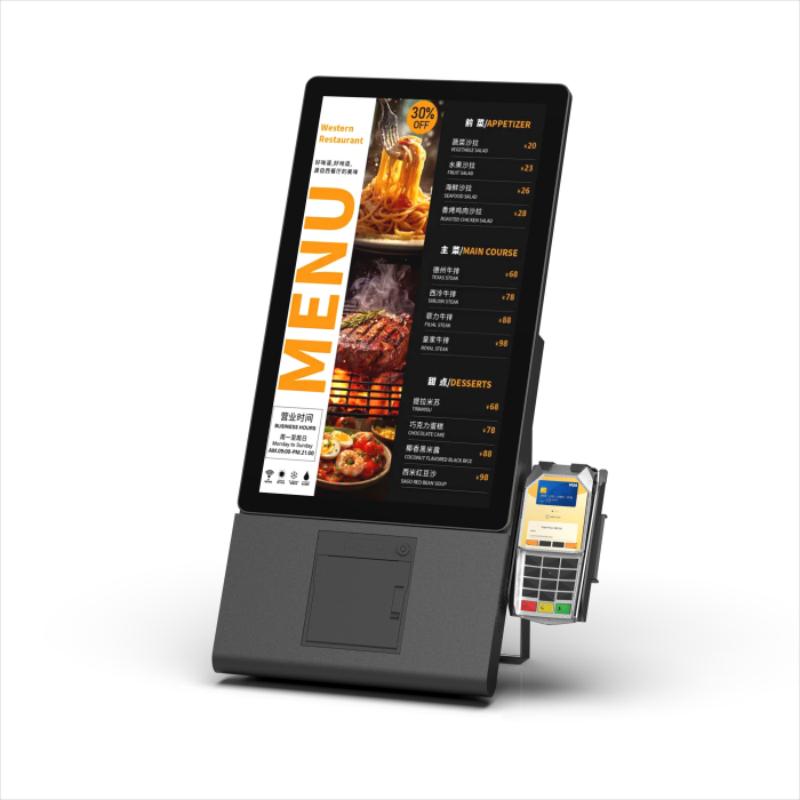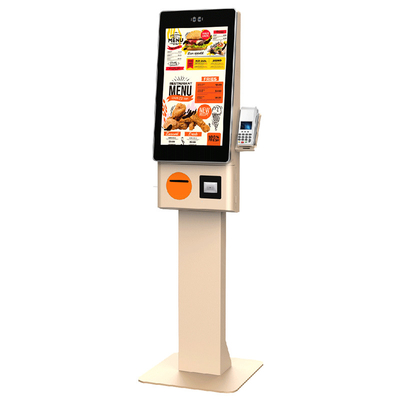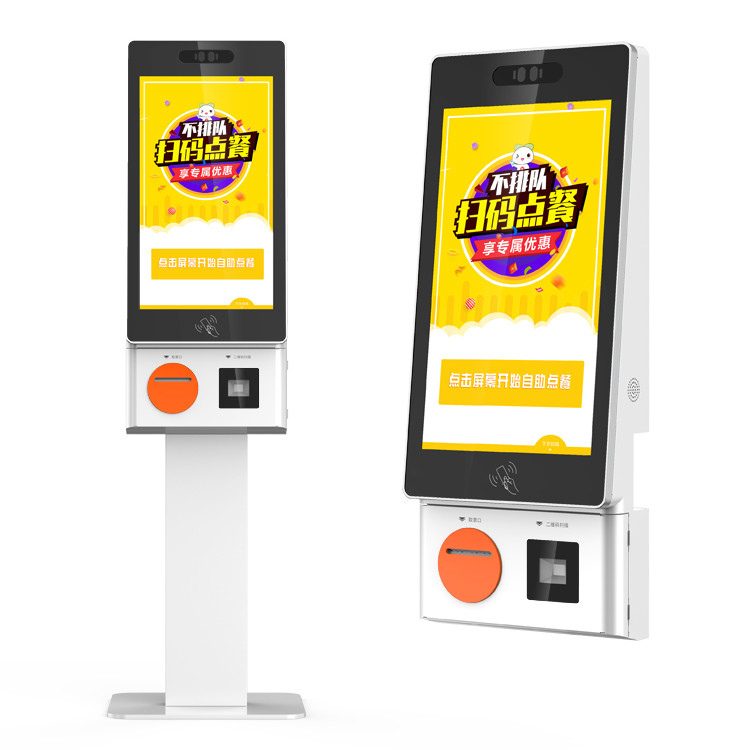





The current market for self ordering kiosk is expanding rapidly, as more restaurants and fast-food chains adopt this technology to enhance customer experience and streamline operations. With increasing demand, the cost of self ordering kiosks is becoming a major concern for many buyers.
As a professional self ordering kiosk manufacturer, we understand the need for clarity when it comes to pricing. In this article, we will provide a detailed breakdown of self ordering kiosk cost, including the components that affect pricing, key factors influencing cost of self ordering kiosk, and how to make informed purchasing decisions. Below is the detailed content to guide you.

Self ordering kiosks have become a crucial investment for many restaurants, enhancing customer experience and operational efficiency. The cost of these kiosks varies depending on several factors, including hardware, software, customization, installation, and maintenance. Understanding the cost components helps businesses make informed decisions when selecting and budgeting for a self ordering kiosk. Below is a detailed breakdown of the key cost components:
| Cost Component | Description | Estimated Cost Range |
|---|---|---|
| Hardware | Includes touchscreen displays, processors, card readers, and printers. | $2,000 - $7,000 per unit |
| Software | Licensing fees for ordering software and integration with POS systems. | $500 - $2,000 per year |
| Customization | Additional features such as branding, interface design, and functionality upgrades. | $1,000 - $3,000 |
| Installation | Costs for physical setup and configuration of the kiosk in the restaurant. | $500 - $1,500 |
| Maintenance and Support | Ongoing support, including software updates and hardware repairs. | $300 - $1,000 annually |
| Payment Processing Fees | Transaction fees for credit card and other digital payments processed through the kiosk. | 1% - 3% of transaction amount |
| Shipping and Logistics | Costs to deliver the kiosks to your location. | $200 - $500 per unit |
| Training and Setup | Staff training on using and maintaining the kiosk. | $100 - $500 |

As a professional self ordering kiosk manufacturer, understanding the various cost components of a self ordering kiosk is critical for making the right investment decisions. The total cost of a self ordering kiosk comprises several key elements, including hardware, software, customization, installation, and ongoing maintenance. Each of these factors plays a significant role in determining the overall expense and functionality of the kiosk. Below is a detailed breakdown of the main components that contribute to the cost:
The hardware refers to the physical components of the kiosk, such as:
Touchscreen Display: Typically 15-32 inches, depending on the model and customization needs.
Processor: Ensures the smooth operation of software and user interface.
Card Readers: Integrated for payment processing (credit/debit card, NFC payments).
Printers: For printing order receipts.
Enclosure: Customizable, durable casing that houses the internal components.
Software ensures smooth operation, providing the interface for ordering, payments, and integration with point-of-sale (POS) systems.
Kiosk Software Licensing: A yearly or one-time fee for using the software that runs the ordering process.
POS Integration: Fees for connecting the kiosk to the restaurant’s existing POS system.
Analytics and Reporting: Software for tracking sales, order trends, and customer preferences.
Restaurants often need tailored designs or functionality to match their branding and operational needs.
Branding: Custom interface designs with restaurant logos and colors.
Features: Additional features such as loyalty programs, multi-language support, or upselling suggestions.
Physical installation costs include setting up the kiosks at the restaurant and ensuring the proper connection to power and network.
Installation Services: Professional setup of the kiosk hardware.
Configuration: Initial software configuration and testing to ensure functionality.
Ongoing costs include technical support, regular software updates, and repairs.
Software Updates: Keeping the software up-to-date for new features or security improvements.
Hardware Repairs: Replacing faulty components such as touchscreens or printers.
These fees are incurred whenever a customer makes a transaction using digital payment methods.
Transaction Fees: Charged by payment processors (usually a small percentage of each sale).
Costs for delivering kiosks to the restaurant, which can vary based on the distance and the number of units.
Shipping Fees: Based on the size, weight, and destination of the kiosks.
Training restaurant staff on how to use and maintain the kiosks effectively.
Training Sessions: Hands-on training for staff on kiosk operation and troubleshooting.
These components collectively determine the total cost of owning and operating a self ordering kiosk. By understanding these details, restaurant owners can better plan their budget and choose the options that best fit their needs and long-term goals.

The cost of self ordering kiosk can vary significantly based on a variety of factors. Each factor plays a different role in the total expense and can affect the price to varying degrees. Below is a detailed table outlining the main factors and the extent to which they influence the overall cost:
| Factor | Impact on Cost | Explanation |
|---|---|---|
| Hardware Specifications | High | High-quality displays, processors, printers, and card readers increase costs. More advanced hardware results in higher prices. |
| Customization | Medium-High | Custom branding, interface design, and additional features like loyalty programs add significant costs depending on the level of personalization. |
| Software Features | Medium | Advanced software features like analytics, upselling, and integrations with existing POS systems add to the cost. |
| Installation and Setup | Medium | The complexity of installation, including physical setup and network connections, influences the overall cost, especially for multi-kiosk installations. |
| Maintenance and Support | Medium-Low | Regular software updates, technical support, and occasional hardware repairs contribute to ongoing costs, though not as significantly as initial setup. |
| Location and Logistics | Medium | Shipping costs vary based on the distance from the manufacturing facility to the installation site, especially for international shipments. |
| Number of Units Purchased | Medium-Low | Bulk orders generally reduce the per-unit cost, providing discounts for larger orders, but small orders may have higher unit costs. |
| Payment Processing Fees | Low | Though ongoing, payment processing fees are usually a small percentage of each transaction and have less impact on initial setup costs. |
Making a smart purchase decision for a self ordering kiosk involves evaluating various factors beyond just the upfront cost. It's important to consider long-term benefits, customization needs, and operational requirements to ensure the kiosk aligns with your business objectives. Below are key steps to guide your decision:
Identify the specific features your business requires. Do you need advanced integrations, or will a basic model suffice?
Set a realistic budget that includes not only the initial cost but also installation, maintenance, and software updates over time.
Research and compare different kiosk manufacturers to evaluate their pricing, customization options, and customer support.
Decide whether custom branding and user interface design are essential, as these can significantly impact cost.
Estimate the kiosk's potential to boost sales, improve customer experience, and reduce labor costs. A higher upfront cost may offer better long-term returns.
Some kiosks come with complex installation and maintenance requirements. Choose a solution that fits your operational capacities.
Look for flexible payment options, such as leasing or payment plans, to manage the financial burden.
Seek feedback from other businesses using self ordering kiosks to get insights into actual performance, cost-effectiveness, and ROI.
By considering these factors, you can make an informed purchase decision that balances cost and long-term benefits.

The cost can range from $2,000 to $7,000 per unit, depending on customization, hardware, and software requirements.
Key factors include hardware components, software integration, customization options, installation, and maintenance fees.
Potential hidden costs can include software updates, maintenance, repair fees, and transaction processing fees, depending on the payment method.
Yes, custom branding, user interface design, and additional features like specialized printers or payment systems can significantly increase the cost.
The ROI depends on factors like increased order accuracy, higher sales per order, and labor savings. Many businesses report ROI within 6-12 months.
Yes, many manufacturers offer leasing options or payment plans to help spread out the cost over time.
Standard models start at around $2,000, while fully customized kiosks with advanced features can exceed $10,000.
Maintenance costs can range from $300 to $1,000 per year, depending on the service level and usage frequency.
Address: No. 99-15, Fuan intelligent manufacturing Industrial Park, Dayang Road, Fuhai Street, Baoan District, Shenzhen, China